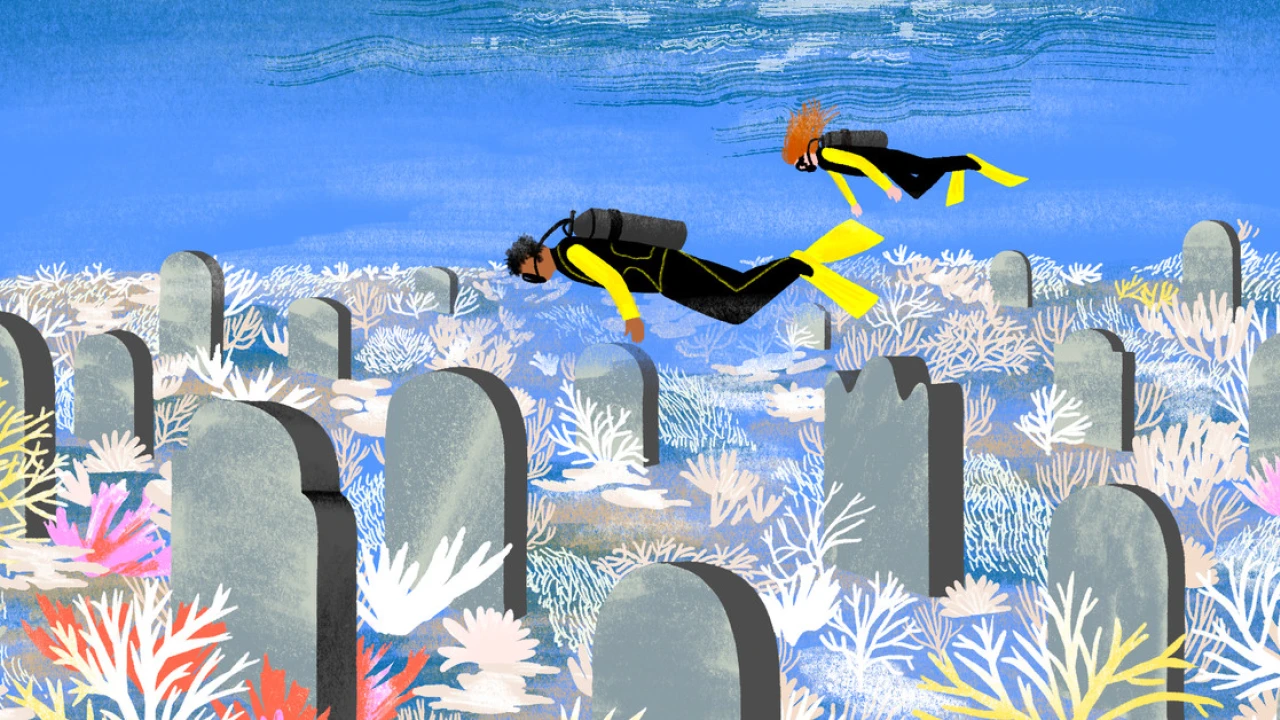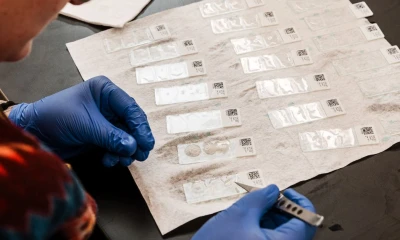Regional
How JoJo Siwa’s “rebrand” got so messy
Is the massive backlash against the former child star justified?

It’s a Hollywood cliche, but unfortunately true, that talented children rarely have it easy transitioning their careers into adulthood, much less transitioning to adulthood themselves. The recent string of controversies around Dance Moms-kid-turned-pop-star JoJo Siwa, however, reminds us that rebranding from a child star to a mature one isn’t easy — especially if your “brand” was perhaps never fully understood to begin with.
Since Siwa started promoting her new single “Karma” over a month ago, the backlash from fans and haters alike has been virtually nonstop. Audiences have trashed her for everything from allegedly “stealing” the song itself (she didn’t) to getting too sexual in the music video, which went viral in part due to the outrage over a scene in which she dry-humps another woman. (She did warn us it wouldn’t be kid-friendly.)
All of this outrage is simultaneously more and less complicated than it looks on the surface. On the one hand, Siwa is yet another young star who’s had trouble putting an end to the aura of their childhood cuteness, and who’s being perceived as “trying too hard to shock us” with a rebrand many seem to view as crass and over-sexualized. On the other hand, the controversy seems to suggest that there’s a limit to what kind of public queerness we’re comfortable with — especially regarding queer women.
On top of all this, there’s an arguably separate conversation about the actually offensive things Siwa has allegedly done and said — a series of missteps, bad business decisions, and profound failures to read the proverbial room that can’t be ignored.
Siwa’s promotion of “Karma” has already dealt her plenty of backlash
JoJo Siwa has long been a fixture of competitive reality TV thanks to her striking personality, nimble dancing, and perhaps most famously, her collection of big bright hair bows, made by her mom.
Siwa joined the Dance Moms universe in 2013, when Dance Moms instructor Abby Lee Miller, who ran the show’s focal dance studio, highlighted her as a guest dancer on the spinoff series Abby’s Ultimate Dance Competition. She joined the main show in its fourth season the following year, then rode the reality dance show wave through the rest of her adolescence and early adulthood.
Siwa grew her fanbase through YouTube via her XOMG POP! channel. Her hit 2016 single “Boomerang,” released when Siwa was almost 13, currently sits just shy of 1 billion views. The video sees her sporting her trademark bows and fully embracing her ice-cream-colored teen girl bubble-pop era. On the strength of its success, Siwa signed a lucrative deal with Nickelodeon in 2017 to do similar work aimed at Nickelodeon’s target audience of preteens — leading Siwa to helm an “empire” of children’s programming that netted her an estimated $20 million over the years. In 2020, Time named Siwa, at 17, one of its 100 most influential people.
Siwa’s Nickelodeon era plays like an extended Hannah Montana remix of fully kid-themed, ditzy pop. Simultaneously, however, and a little incongruously, she continued her dance show career, using it to help her transition toward more adult mediums: She featured as a singing, dancing T-Rex on the third season of The Masked Singer in 2020. After casually coming out in a tweet in 2021, she competed on Dancing With the Stars in its 30th season, dancing to upbeat queer anthems like “Born This Way” as part of a historic same-sex dance team. The last two seasons of So You Think You Can Dance have seen Siwa joining the show as a somewhat controversial judge.
You might expect that with that much influence and popularity and the ability to leverage her dancing skills into an ongoing career, Siwa would have relatively little problem transitioning out of her Nickelodeon phase. But therein lies the problem: The image she’s trying out now is, depending on who you talk to, either a step too far removed from that earlier spunky kid for many fans to take, or not far enough — just “Disney with cuss words,” as one X user put it.
“Child stars and celebrities embody not only our culture’s ideals of childhood, but also demonstrate how contradictory those ideals actually are,” Djoymi Baker, who researches child stars as a media and cinema studies lecturer for RMIT University in Melbourne, told Vox in an email. “Child celebrities are expected to act as if they are not getting older, and maintain a child-like innocence or face public outrage.” With “Karma,” the outrage at Siwa seemed to peak.
Siwa’s “Karma” music video released on April 5, yet due to the incendiary previews of a fully sexualized Siwa, it was drawing backlash well before its release. The general consensus was that Siwa was trying too hard to perform a hyper-sexualized, raunchy caricature of her own queerness — and the actual video only seemed to confirm that view. Highlights include Siwa’s much-mocked choreography and a sequence in which Siwa makes out with a series of different women, set to lyrics about infidelity and reaping what you sow.
The public’s general distaste for Siwa’s “Karma” persona involved debates about authenticity and whether her style is really “her” — a conversation that soon extended to controversy over the song itself and whether it’s also really “hers.”
Things kicked off when Siwa claimed to invent a subgenre of music that already existed. “I want to start a new genre of music,” she told Billboard on April 5, “called ‘gay pop.’” She then went on to list example songs like Lady Gaga’s “Applause” and her own version of “Karma,” prompting many people to respond by noting both the long history of queer pop artists and the long existence of the music she claimed to want to “start.”
She quickly corrected the statement, telling TMZ less than a week later that she “definitely [was] not the inventor” of the style, but rather wanted to “be a piece in making it bigger than it already is.”
By the time Siwa walked back that unfortunate statement, however, the hostility toward her had already calcified. On April 12, artist Lil Tay slammed Siwa on Twitter, noting that she “didn’t buy the song [her 2023 single “SUCKER 4 GREEN”] or hire a ghostwriter,” implying that Siwa had. It’s true that Siwa didn’t write “Karma,” but rather picked up a new production of an old track. According to Siwa, she was pitched an old song that had been recorded by previous artists, including Miley Cyrus, who never released it.
Although it’s a completely pedestrian thing for artists to release previously unreleased or little-known tracks, most of those artists hadn’t recently claimed to be inventing something new, and the backlash that settled on Siwa was ferocious. As part of the virality of the outrage, fans discovered singer Brit Smith’s 2012 version of “Karma” and boosted its sales, pushing the artist to a surprise No. 1 spot on Billboard’s electronic digital chart, all while Siwa’s version failed to even reach the Hot 100. Lil Tay’s “SUCKER” also got a boost, passing a milestone of 5 million Spotify streams amid all the noise over Siwa.
That doesn’t mean the reception to “Karma” has been fully negative, however: Siwa’s version did open across multiple ranking charts, and she played to a crowd of over 50,000 at the Miami Beach Pride Festival on April 14, performing “Karma” for enthusiastic fans and reportedly breaking audience records.
Still, the sheer level of the public’s anger toward Siwa suggests that something deeper is happening. It might stem from the career growing pains of a young adult making young adult mistakes, but part of it seems to boil down to a fundamental misunderstanding of Siwa herself.
Siwa’s “rebrand” arguably isn’t that much different from her original brand
During her time on Dance Moms, Siwa was portrayed as colorful, loud, opinionated, “obnoxious, [and] sometimes rude.” Siwa channeled that energy into her performances, which usually reflected an edgy personality and powerful, athletic dancing. The bows she always wore, followed by her Nickelodeon era, may have given audiences the false impression of Siwa as forever innocent, stuck in arrested development as a preteen. Writing for Vogue in 2021, Emma Specter argued Siwa had “built a brand off of the kind of glittery, bow-festooned femininity that is typically reserved for straight women” — a brand that her coming-out, especially at the young age of just 17, worked to subvert.
But in fact, there’s really not much difference between one of Siwa’s early dance routines and her current much-touted “rebrand.” It’s not a stretch, for example, to see the girl who performed a tongue-wagging “Electricity” trotting out a KISS homage for an awards show. Abby Lee Miller herself recognized Siwa’s underlying consistency when she reacted to “Karma” on TikTok. “Everyone’s making such a big deal about the rebrand,” she noted. “I think it’s JoJo with paint on her face and a fabulous costume. It’s always been JoJo.”
On the other hand, the backlash to this aesthetic has resurfaced some not-so-good things Siwa has actually done. Though Siwa is only 20, the list of her controversies and allegedly offensive behavior would be notable for a star at any age — everything from marketing a makeup line that was recalled for containing asbestos, to allegedly helping create an abusive work environment for members of her failed pop group XOMG POP!, to defending and continuing to be friends with disgraced YouTuber Colleen Ballinger after Ballinger allegedly engaged her underaged fans in inappropriate sexual exchanges.
Though some of these claims and allegations aren’t necessarily Siwa’s fault, many seem completely avoidable — like the time a white child dancer was asked to don brown monkey makeup for her 2020 music video “Nonstop.” Responding to backlash over the alleged blackface, Siwa doubled down rather than apologizing. That’s more or less her MO for these situations — forging ahead rather than wasting time asking for forgiveness.
And while there’s a huge difference between an adult putting a kid in blackface and a 17-year-old Siwa doing it, she’s old enough to know better, and this sort of behavior has caused Siwa’s notoriety to surpass her fame.
Still, none of these controversies were what caused such deep public outrage in the days since “Karma” was released, and it’s hard not to think that this negative response ultimately boils down to a mismatch of expectations between Siwa’s extended public audience and the core queer audience to whom she’s performing.
It’s hard not to compare Siwa’s fairly tame performance of queer sexuality in “Karma” to Lil Nas X’s wildly successful “Montero” music video. Both were the entries of established pop stars into a queer space, claiming their recently announced sexualities through raunchy, glittery, erotic performances. “Montero” saw Lil Nas X riding a stripper pole and giving the literal devil a lap dance before crowning himself the king of hell. By comparison, “Karma” is milder and murkier: Siwa uses the muddled metaphor of a sea monster emerging from the ocean to illustrate the anxieties of a girl who can’t choose between any of the beautiful women in her orbit.
Admittedly, “Montero” is a lot more fun, full of far more creative and inventive artistry; yet it’s hard not to wonder if the vast difference between the public’s glee and delight in “Montero” and its disdain and derision for Siwa’s “Karma” is ultimately about a misogynistic refusal to let female pop stars grow up — at least without forcing them into rigid parameters of what that adulthood looks like.
“The child star brand of innocence has historically been quite specific,” Baker said. “It is predominantly white, able-bodied, cis-gendered, and ostensibly asexual, with an expectation that growing up will be both heteronormative and yet as non-sexual as possible, particularly for women. This pattern has been seen again and again, with female child stars such as Miley Cyrus, Britney Spears and Lindsay Lohan.”
Baker pointed out that the Siwa backlash closely mirrors the backlash her teen pop predecessor Miley Cyrus received a decade ago, at the same age of 20, after twerking with Robin Thicke in 2013 — a move for which Cyrus recently confessed she “carried some guilt and shame.”
“I was creating attention for myself because I was dividing myself from a character I had played,” Cyrus told British Vogue last year. “Anyone, when you’re 20 or 21, you have more to prove. ‘I’m not my parents.’ ‘I am who I am.’”
Baker noted that Siwa has called Cyrus her “number one idol” for making the transition to an adult brand. A good deal of the criticism Cyrus faced in 2013 focused on the racially insensitive cultural appropriation of her twerking. Yet Baker also observed that both women’s queerness, and their performance of that queerness against their earlier sanitized child-star images, may have amplified the backlash they received. “That Cyrus is pansexual and Siwa is lesbian means they do not fit into the restrictive ideals of childhood, the child star, or growing up that still dominate,” she said.
After all, apart from Siwa claiming her sexuality, just about everything else about her aesthetic is the same — she’s still colorful, opinionated, and backed by innumerable sparkly outfits. It’s somewhat ironic, then, that “Karma” has provoked such conversations about authenticity. Love her or hate her, the JoJo we have now was arguably the JoJo we had all along.
Regional
The end of coral reefs as we know them
As burning fossil fuels warms up the ocean and makes it more acidic, coral reefs are bleaching and dying. They’ll never be the same.

More than five years ago, the world’s top climate scientists made a frightening prediction: If the planet warms by 1.5 degrees Celsius, relative to preindustrial times, 70 to 90 percent of coral reefs globally would die off. At 2°C, that number jumps to more than 99 percent.
These researchers were essentially describing the global collapse of an entire ecosystem driven by climate change. Warm ocean water causes corals — large colonies of tiny animals — to “bleach,” meaning they lose a kind of beneficial algae that lives within their bodies. That algae gives coral its color and much of its food, so bleached corals are white and starving. Starved coral is more likely to die.
In not so great news, the planet is now approaching that 1.5°C mark. In 2023, the hottest year ever measured, the average global temperature was 1.52°C above the preindustrial average, as my colleague Umair Irfan reported. That doesn’t mean Earth has officially blown past this important threshold — typically, scientists measure these sorts of averages over decades, not years — but it’s a sign that we’re getting close.
:no_upscale()/cdn.vox-cdn.com/uploads/chorus_asset/file/25417627/GettyImages_2147871256.jpg)
:no_upscale()/cdn.vox-cdn.com/uploads/chorus_asset/file/25417632/GettyImages_2147843026.jpg)
So, it’s no surprise that coral reefs are, indeed, collapsing. Earlier this month, the National Oceanic and Atmospheric Administration (NOAA) announced that the planet is experiencing its fourth global “bleaching” event on record. Since early 2023, an enormous amount of coral in the Pacific, Atlantic, and Indian oceans has turned ghostly white, including in places like the Great Barrier Reef and the Florida Keys. In some regions, a lot of the coral has already died.
“What we are seeing now is essentially what scientists have been predicting was going to happen for more than 25 years,” Derek Manzello, a marine scientist at NOAA who leads the agency’s coral bleaching project, told Vox. The recent extreme ocean warming can’t solely be attributed to climate change, Manzello added; El Niño and even a volcanic eruption have supercharged temperatures.
But coral reefs were collapsing well before the current bleaching crisis. A study published in 2021 estimated that coral “has declined by half” since the mid-20th century. In some places, like the Florida Keys, nearly 90 percent of the live corals have been lost. Past bleaching events are one source of destruction, as are other threats linked to climate change, including ocean acidification.
The past and current state of corals raises an important but challenging question: If the planet continues to warm, is there a future for these iconic ecosystems?
What’s become increasingly clear is that climate change doesn’t just deal a temporary blow to these animals — it will bring about the end of reefs as we know them.
Will there be coral reefs 100 years from now?
In the next few decades, a lot of coral will die — that’s pretty much a given. And to be clear, this reality is absolutely devastating. Regardless of whether snorkeling is your thing, reefs are essential to human well-being: Coral reefs dampen waves that hit the shore, support commercial fisheries, and drive coastal tourism around the world. They’re also home to an incredible diversity of life that inspires wonder.
“I’m pretty sure that we will not see the large surface area of current reefs surviving into the future,” said Hans-Otto Pörtner, who was involved in the landmark 2018 report, led by the Intergovernmental Panel on Climate Change (IPCC), that predicted the downfall of tropical reefs at 1.5°C warming. “Every year is going to be worse.”
:no_upscale()/cdn.vox-cdn.com/uploads/chorus_asset/file/25417594/ct5km_baa5_max_7d_v3.1_tropics_current_cropped.png)
But even as many corals die, reefs won’t exactly disappear. The 3D formation of a typical reef is made of hard corals that produce a skeleton-like structure. When the polyps die, they leave their skeletons behind. Animals that eat live coral, such as butterfly fish and certain marine snails, will likely vanish; plenty of other fish and crabs will stick around because they can hide among those skeletons. Algae will dominate on ailing reefs, as will “weedy” kinds of coral, like sea fans, that don’t typically build the reef’s structure.
Simply put, dead reefs aren’t so much lifeless as they are home to a new community of less sensitive (and often more common) species.
“Reefs in the future will look very different,” said Jean-Pierre Gattuso, a leading marine scientist who’s also involved with the IPCC. “Restoring coral reefs to what they were prior to mass bleaching events is impossible. That is a fact.”
On the timescale of decades, even much of the reef rubble will fade away, as there will be no (or few) live corals to build new skeletons and plenty of forces to erode the ones that remain. Remarkably, about 30 percent of the carbon dioxide that we pump into the atmosphere is absorbed by the oceans. When all that CO2 reacts with water, it makes the ocean more acidic, hastening the erosion of coral skeletons and other biological structures made of calcium carbonate.
:no_upscale()/cdn.vox-cdn.com/uploads/chorus_asset/file/24937490/adler_updated_7986.jpg)
Buying time
For decades now, hard-working and passionate scientists have been trying to reverse this downward trend — in large part, by “planting” pieces of coral on damaged reefs. This practice is similar to planting saplings in a logged forest. In reef restoration, many scientists and environmental advocates see hope and a future for coral reefs.
But these efforts come with one major limitation: If the oceans continue to grow hotter, many of those planted corals will die too. Last fall, I dived a handful of reefs in the Florida Keys where thousands of pieces of elkhorn and staghorn — iconic, reef-building corals — had been planted. Nearly all of them were bleached, dead, or dying.
“When are [we] going to stop pretending that coral reefs can be restored when sea temperatures continue to rise and spike at lethal levels?” Terry Hughes, one of the world’s leading coral reef ecologists, wrote on X.
Ultimately, the only real solution is reducing carbon emissions. Period. Pretty much every marine scientist I’ve talked to agrees. “Without international cooperation to break our dependence on fossil fuels, coral bleaching events are only going to continue to increase in severity and frequency,” Manzello said. Echoing his concern, Pörtner said: “We really have no choice but to stop climate change.”
:no_upscale()/cdn.vox-cdn.com/uploads/chorus_asset/file/24925256/adler_5447__1_.jpg)
But in the meantime, other stuff can help.
Planting pieces of coral can work if those corals are more tolerant to threats like extreme heat or disease. To that end, researchers are trying to breed more heat-resistant individuals or identify those that are naturally more tolerant to stress — not only heat, but disease. Even after extreme bleaching events, many corals survive, according to Jason Spadaro, a restoration expert at Florida’s Mote Marine Laboratory. (“Massive” corals, which look a bit like boulders, had high rates of survival following recent bleaching in Florida, Spadaro said.)
Scientists also see an urgent need to curb other, non-climate related threats, like water pollution and intensive fishing. “To give corals the best possible chance, we need to reduce every other stressor impacting reefs that we can control,” Manzello told Vox.
These efforts alone will not save reefs, but they’ll buy time, experts say, helping corals hold on until emissions fall. If those interventions work — and if countries step up their climate commitments — future generations will still get to experience at least some version of these majestic, life-sustaining ecosystems.
This story appeared originally in Today, Explained, Vox’s flagship daily newsletter. Sign up here for future editions.
Regional
So you’ve found research fraud. Now what?
Harvard dishonesty researcher Francesca Gino faked her research. But she still has a lot to teach us.

When it is alleged that a scientist has manipulated data behind their published papers, there’s an important but miserable project ahead: looking through the rest of their published work to see if any of that is fabricated as well.
After dishonesty researcher Francesca Gino was placed on leave at Harvard Business School last fall following allegations that four of her papers contained manipulated data, the people who’d co-authored other papers with her scrambled to start double-checking their published works.
Gino was a prolific researcher, and with 138 papers now called into question and more than 143 people who had co-authored with her, it proved a challenge to find who handled what data — so six co-authors began to work through each paper to systematically make public how the data was collected and who had custody of it. Their work was organized as the Many Co-Authors Project.
The group was undeterred by Gino suing all of her accusers last summer, as well as by her condemnation of the project as unfair (“it inadvertently creates an opportunity for others to pin their own flawed studies or data anomalies on me,” she wrote). But their work provides a window into what kinds of manipulations and errors might make it past peer review until they come under heightened scrutiny — and raises in its own way a broader problem with our current research system.
Based on the group’s work, it looks plausible that the data manipulation for which Gino is under fire is not contained to the four papers that have already been retracted. For example, in this 2019 paper, many participants were disqualified for not paying attention to the instructions — but the participants who were disqualified were overwhelmingly ones whose results were contrary to the hypothesis. (Likely because of the litigation surrounding the charges against Gino, the authors are careful not to say outright that what they’ve seen is a surefire sign of fraud.)
But papers like the 2019 one — where the data is available — are the exception, not the rule. For most of the papers, no one has access to the data, which leaves no way to determine whether manipulation occurred.
In some cases, co-authors are wary of participating in the effort to find other sketchy studies, worried that their name will be tarnished by association if they find a fraudulent paper. With systematic fraud, transparency is the only way through. Without a serious reckoning, the discovery of data manipulation doesn’t undo the harm it caused to our understanding of the world. Even after a paper is retracted, it doesn’t mean that other research that relied on those findings becomes amended. Instead, new studies are built atop flawed research.
That’s a problem for scientific inquiry.
We need to do something more systematic about fraud
There’s something simultaneously heartwarming and exasperating about stories of researchers across the globe coming together to check whether their published research was actually faked.
Why is basic information such as “which co-author collected the data?” and “who has access to the raw data?” not included as part of the process of publishing papers? Why is the data itself not available by default, which allows for finding mistakes as well as fraud? And after many researchers have been accused of systematic fraud, why is there still no process for systematically looking for problems in research?
This is one of Gino’s complaints about the Many Co-Authors Project. “Like all scholars, I am interested in the truth. But auditing only my papers actively ignores a deeper reflection for the field,” she wrote. “Why is it that the focus of these efforts is solely on me?”
The focus is on her for a good reason, but I do think that the Many Co-Authors Project is a symptom of a broken system. Even once a researcher is suspected of fraud, no institution is responsible for reviewing the work they’ve published and how it might affect the literature.
Richard Van Noorden reported in Nature last year about what happens when a researcher is well-known to have fabricated data: “A more recent example is that of Yoshihiro Sato, a Japanese bone-health researcher. Sato, who died in 2016, fabricated data in dozens of trials of drugs or supplements that might prevent bone fracture. He has 113 retracted papers, according to a list compiled by the website Retraction Watch.”
So what happened to other work that relied on Sato’s? For the most part, the retractions haven’t propagated; work that relied on Sato’s is still up: “His work has had a wide impact: researchers found that 27 of Sato’s retracted RCTs had been cited by 88 systematic reviews and clinical guidelines, some of which had informed Japan’s recommended treatments for osteoporosis. Some of the findings in about half of these reviews would have changed had Sato’s trials been excluded.”
Journals do not consider themselves responsible for following up when they retract papers to see if other papers that cite those papers should be affected, or to check if other papers published by the same author have similar problems. Harvard doesn’t consider itself to have this responsibility. Co-authors may or may not consider themselves to have this responsibility.
It’s as if we treat every case of fraud in isolation, instead of acknowledging that science builds on other science and that fraud rots those foundations.
Some easy principles for reform
I’ve written before that we should do a lot more about scientific fraud in general. But it seems like a particularly low bar to say that we should do more to, when a person is demonstrated to have manipulated data, check the rest of their work and get it retracted if needed. Even this low bar, though, is only being met due to the unpaid and unrewarded work of people who happened to notice the problem — and some of them have been sued for it.
Here’s what could happen instead:
Data about which co-author conducted the research and who has access to the raw data should be included as a matter of course as part of the paper submission process. This information is crucial to evaluating any problems with a paper, and it would be easy for journals to simply ask for it for every paper. Then you wouldn’t need a project like the Many Co-Authors Project — the data they’re attempting to collect would be available to everyone.
Nonprofits, the government, or concerned citizens could fund an institution that followed up on evidence of data manipulation to make sure that manipulated results no longer poison the literature they’re a part of, especially in cases like medical research where peoples’ lives are at stake.
And the law could protect people who do this essential research by making it faster to dismiss lawsuits over legitimate scientific criticism. Gino sued her critics, which is likely contributing to the slowness of reevaluations of her other work. But she was only able to do that because she lived in Massachusetts — in some states, so-called anti-SLAPP provisions help get quick dismissal of a lawsuit that suppresses protected speech. Part of the saga of Francesca Gino is that Massachusetts has a very weak anti-SLAPP law, and so all of the work to correct the scientific record takes place under the looming threat of such a lawsuit. In a state with better anti-SLAPP protections, she’d have to make the case for her research to her colleagues instead of silencing her critics.
It is very much possible to do better when it comes to scientific fraud. The irony is that Gino’s research and the controversy surrounding it may well still end up having a long-lasting legacy in teaching us about dishonesty and how to combat it.
A version of this story originally appeared in the Future Perfect newsletter. Sign up here!
-

 Pakistan 1 day ago
Pakistan 1 day agoSaad Rafique terms Ali Amin’s threat as serious matter
-

 Business 1 day ago
Business 1 day agoGold price high by Rs2500 per tola in Pakistan
-

 Technology 2 days ago
Technology 2 days agoQualcomm strong-arms its way into Windows laptops this summer
-

 Pakistan 20 hours ago
Pakistan 20 hours agoKP govt to buy local wheat
-

 Entertainment 2 days ago
Entertainment 2 days agoActor Madiha Rizvi remarries after 1.5 year of divorce
-

 Pakistan 2 days ago
Pakistan 2 days agoPML-N office burning case: Sanam, Dr. Yasmin, others summoned for indictment
-

 Pakistan 2 days ago
Pakistan 2 days agoMarwat says, ‘Imran scolds me over Saudi Arabia statement’
-

 Pakistan 1 day ago
Pakistan 1 day agoPM to fly Saudi Arabia on April 28 to attend WEF





















